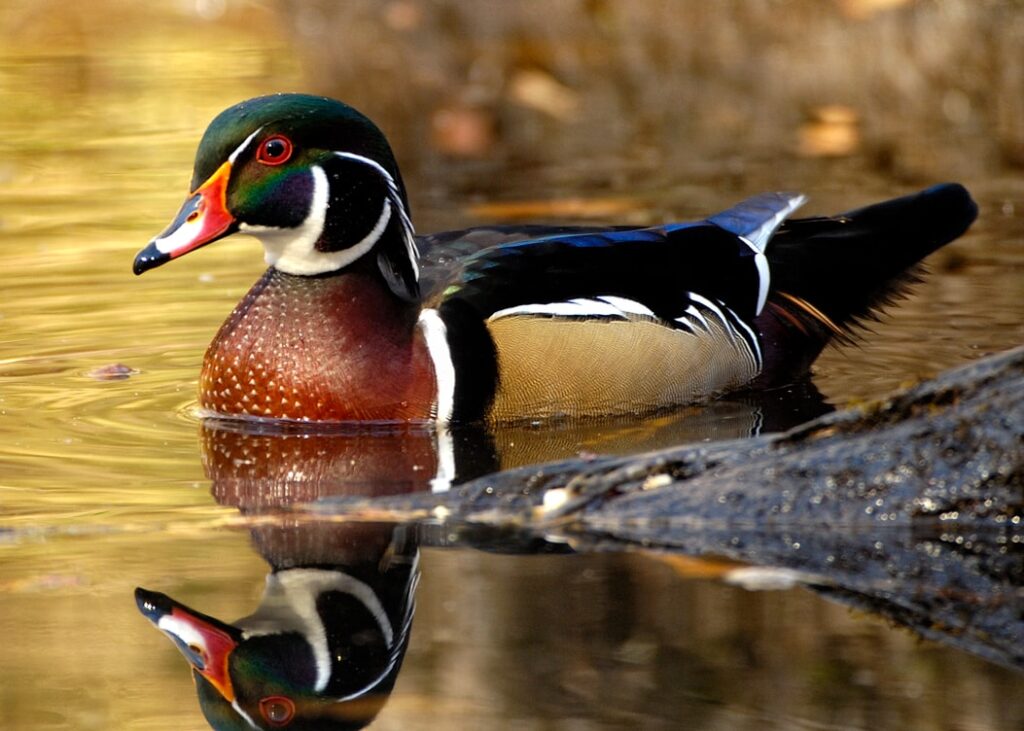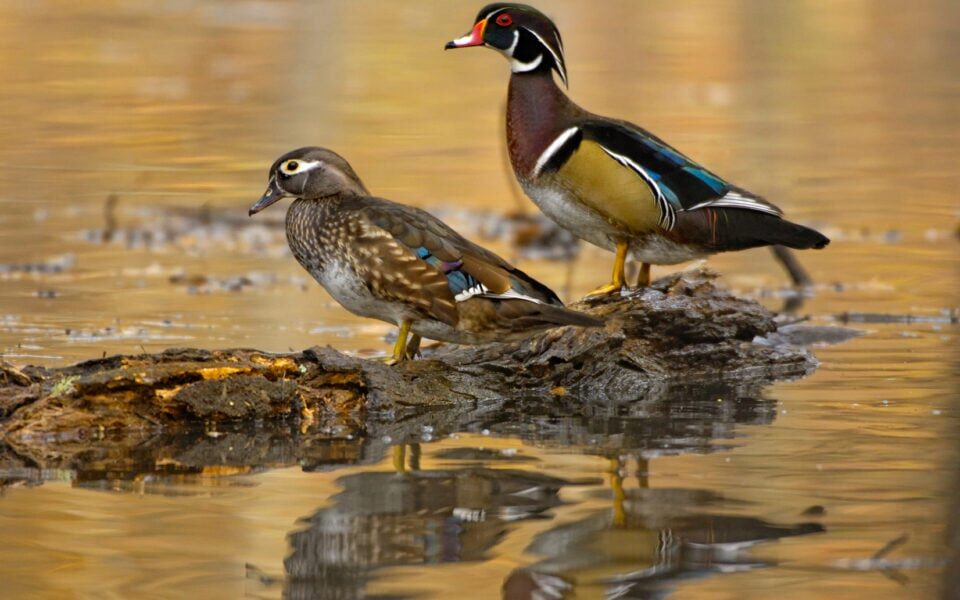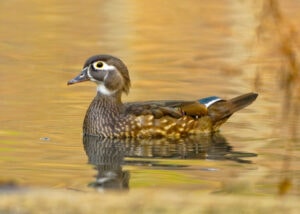Species Profile: Wood Duck, Fast Facts, Trivia, & Management Tips:

The wood duck (Aix sponsa) has several nicknames- woodie, Carolina duck, swamp duck, squealer, and summer duck. It’s rarely observed on marine waters, instead preferring swamps and wooded freshwater wetland habitat near ponds, creeks and rivers. Beaver ponds form some of the best wood duck habitat. Woodies range throughout most of the United States, southern Canada and parts of Mexico during winter. Over recent decades, their breeding range has extended into the Great Plains as wooded riparian corridors were established.
The drake wood duck’s stunning multi-color plumage makes it easily the most recognizable and beautiful duck in North America. Even more flamboyant in mating plumage, the male’s droop-crested head is green and purple with white accents. The neck and throat are white. The breast is a rich chestnut brown with white flecks. The lower breast is tan and the wings shimmer metallic blue and green. The eyes are bright crimson and the bill is red with a black tip. The legs and feet are dark yellow. Ben wood ducks are less conspicuous with a more subtle iridescence on brownish-olive bodies with white streaks on the breast and flanks. The bill is blue-gray. Brownish black eyes are encircled by a white teardrop shaped patch, Legs and feet are dark grayish yellow.
Wood duck populations were pushed to near extinction by the early 1900s due to habitat loss through stream-side and bottomland timber cutting, eradication of beavers and unregulated hunting. Legal protection began in 1918 with the Migratory Bird Treaty Act. Beavers were restocked over much of their previous range. Thousands of nesting boxes were installed where natural nest cavities were scarce. These and the establishment of riparian corridors enabled wood duck populations to rebound to today’s abundant levels.
Wood ducks are the second most popular waterfowl hunted, after mallards. Mossy Oak Biologic offers gamekeepers a waterfowl seed mix, Guide’s Choice. It’s designed to be planted on the ground in a water controlled impoundment or in areas that naturally flood once fall and winter rains come.
Did You Know…
- Wood ducks are about half the size of a mallard and one of only a few ducks that have claws on their toes that allow them to perch in trees.
- Wood ducks are dabblers, taking short, shallow dives in search of aquatic plants, seeds, nuts, fruits, insects and invertebrates. They also feed on land and favor acorns when available.
- Wood ducks can fly at speeds up to 30 mph. Drakes make a rising and falling “wheet-wheet” whistling call. Hens make a loud “oo-eek, oo-eek” when disturbed and taking flight.
- Wood duck pairs are monogamous but break up when the hen begins incubation. The clutch averages 12 white eggs but many more may be hatched due to nest dumping by other ducks.
- Wood ducks nest in natural tree cavities near or above water up to 60 feet high. It’s the only North American duck to regularly produce two broods in a year. Ducklings leave the nest tree or box the day after hatching and are able to jump from extreme heights onto water or ground without injury. Newly hatched young can swim and feed themselves, The hen tends them for 5 of 6 weeks then leaves, Young wood ducks fly at 8 to 10 weeks.
- Interested gamekeepers can download wood duck nesting box plans at this link https://www.ducks.org/conservation/waterfowl-research-science/build-a-wood-duck-box
Join our weekly newsletter or subscribe to GameKeepers Magazine.
Your source for information, equipment, know-how, deals, and discounts to help you get the most from every hard-earned moment in the field.









